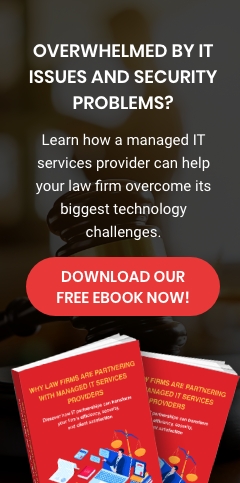Ransomware is one of the most pervasive and dangerous threats facing the business community. It is a particularly nasty type of malware that holds your crucial files hostage and demands a “ransom” payment to release them. Ransomware poses a potentially devastating impact on companies on a global scale.
On May 12, 2017, the WannaCry ransomware affected over 200,000 organizations in 150 countries in the first few hours of the attack. But this widespread attack wasn’t the only one. A month later, companies around the world were once again compromised by Petya, a ransomware that quickly spread through Europe, shutting down ATMs, airports, major firms, and government departments in its wake.
If such ransomware can cripple large-scale organizations, there’s no doubt small businesses like yours are highly vulnerable. While there are no foolproof ways to protect your systems from ransomware, you can take these preventive measures to protect your IT resources from future attacks.
Back up files regularly
The best defense against ransomware attacks is to reduce vulnerabilities in the first place. This means backing up important data daily, so even if your computers are locked down by ransomware, you won’t be forced to pay to see your data again. With a robust backup strategy in place, you can reverse the damage by restoring your data to a point before the attack occurred.
It’s equally important to store your backups in multiple offsite locations, since backups accessible through the network are at risk of being infected by ransomware, too. This is where traditional, tape and disk-based backup systems can come into play.
Update everything
Cyber criminals who use ransomware are always looking for the weakest link in your networks. In many cases, you can mitigate the catastrophic damage of ransomware by installing new software updates and patches as soon as they’re released. These patches will shore up holes that hackers are exploiting and reduce the number of security breaches.
Educate your workforce
User education is a powerful yet often overlooked weapon in your arsenal against ransomware. Using weak passwords, opening unsolicited emails, clicking on suspicious links, and downloading attachments from unknown senders -- these are just some of the most obvious examples of how an employee’s actions can leave your company wide open to ransomware attacks.
It’s essential to invest in training programs that will get your staff up-to-speed on ransomware and what their roles are when it comes to protecting your company’s virtual assets. The training session can simply be a series of group lunches where the IT team informs users via discussion sessions. Of course, you can also hire an expert security consultant to deliver the training, with detailed videos and some real-world examples.
Pay close attention to emails
Ransomware often disguises itself as innocent-looking email attachments or links that appear legitimate but actually lead to malicious websites. These emails can bait unsuspecting users into opening the infected files and clicking on the links without as much as a second thought.
You need to be extremely careful when opening emails from anyone outside of your organization. This also applies to senders you’re familiar with, since ransomware may masquerade as emails from companies or people you regularly interact with online. When in doubt, simply delete suspicious emails without opening them.
Take a blended approach to cyber security
Many businesses already have antivirus software installed in their systems. But the big problem is that antivirus is a reactive technology, and is effective only against known threats and their variations. Ransomware is constantly evolving, and the preventive measures you put in place today might no longer be sufficient tomorrow.
It’s prudent to deploy multiple layers of protection when combating against ransomware.
Managed endpoint security, password management software, data encryption tools, and firewalls are some of the alternatives that will make a great addition to your line of defense.
There’s no silver bullet to ensure your company is fully protected from ransomware, but by implementing these security best practices, you can drastically reduce the chances of infection. If you want to protect your data from falling into the wrong hands, get in touch with the experts at USWired today.


